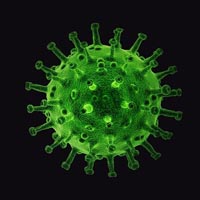 Smart Citations
Smart CitationsSee how this article has been cited at scite.ai
scite shows how a scientific paper has been cited by providing the context of the citation, a classification describing whether it supports, mentions, or contrasts the cited claim, and a label indicating in which section the citation was made.
Consider differentials before diagnosing COVID-19 associated polyradiculitis
Evidence is accumulating that SARS-CoV-2 infections and SARS-CoV-2 vaccinations can induce Guillain-Barre syndrome (GBS). More than 400 GBS cases after SARS-CoV-2 infection respectively vaccination have been reported as per the end of 2021. GBS is usually diagnosed according to the Brighton criteria, but also the Besta criteria or Hadden criteria are applied. The diagnosis can be supported by MRI with contrast medium of the cranial or spinal nerves showing enhancing nerve roots. As GBS can be complicated by autonomic dysfunction such as pupillary abnormalities, salivatory dysfunction, reduced heart rate variability, bowel disturbance (constipation, diarrhea), urinary hesitancy, urinary retention, or impotence, it is crucial to investigate GBS patients for autonomic involvement. Before diagnosing GBS various differentials need to be excluded, including neuropathy as a side effect of the anti-SARS-CoV-2 medication, critical ill neuropathy in COVID-19 patients treated on the ICU, and compression neuropathy in COVID-19 patients requiring long-term ventilation.
Downloads
Citations
10.4081/ejtm.2022.10731
10.4081/ejtm.2022.10511
10.4081/ejtm.2022.10777
10.7759/cureus.37578
10.3390/diagnostics13020293
10.3390/vaccines10122095
How to Cite
PAGEPress has chosen to apply the Creative Commons Attribution NonCommercial 4.0 International License (CC BY-NC 4.0) to all manuscripts to be published.

 https://doi.org/10.4081/ejtm.2022.10111
https://doi.org/10.4081/ejtm.2022.10111




